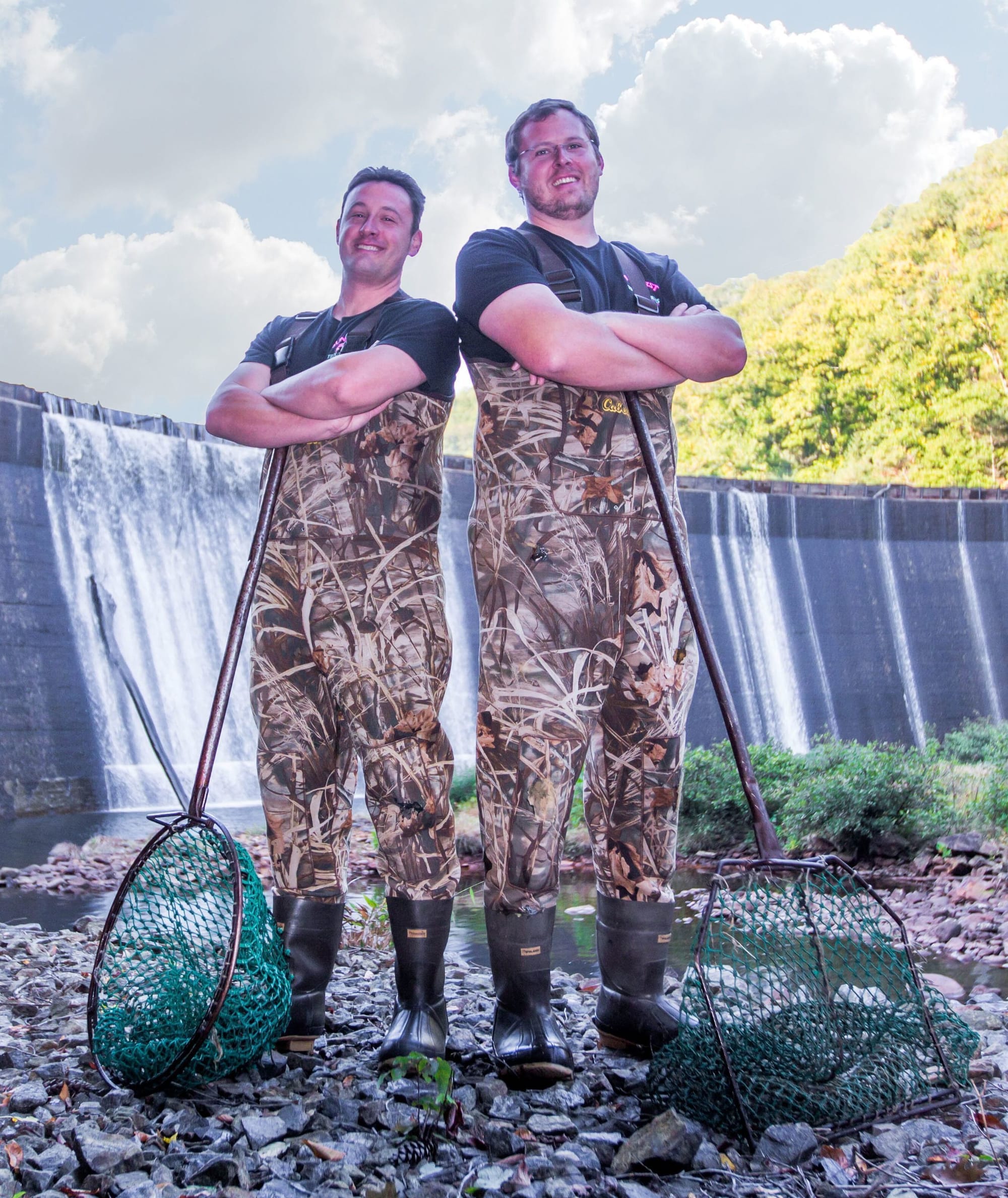Rainbow Trout at Sunburst Trout

Sunburst Trout Farms, run by siblings Wes and Ben Eason, is a family-owned rainbow trout farm in western North Carolina. The company is passionate about changing people’s minds one fish at a time. Founded over 70 years ago in 1948, Sunburst Trout Farms is a third-generation trout farm run and owned by brothers, Wes and Ben Eason. Sunburst was started by Wes and Ben’s grandfather, Dick Jennings, in 1948. It is the first commercial trout farm in the southeast. Sunburst raises their trout in the Shining Rock Wilderness in the Pisgah National Forest and locally processes in a state-of-the-art facility in nearby Waynesville.
TFF got a minute of owner Wes’ time to talk about his homegrown rainbow trout practices and the pressing concerns among the aquaculture industry today.
Today’s Farmed Fish [TFF]: How do you get into this business?
Sunburst Trout [ST]: [Laughs] Me, my brother Ben, and our sister Katie, all having worked summers at the farm growing up said we would never work there. But starting in early 2001 I came to work at the farm, then a few months later Ben started as well. Katie joined in 2011. Ben’s wife, Anna, joined the business in 2007, and Katie’s husband, Clay, joined in 2013.
TFF: Tell us a bit about your fish and how it’s raised?
ST: We grow rainbow trout (Oncorhynchus mykiss). Trout is actually a cousin to salmon and it’s in the Salmonid family. As of right now we purchase small fish , 1-4oz, and grow them to around 2lbs. Since we grow them so much larger than a traditional trout farm it takes about 2 years to achieve full growth. We find growing a larger fish creates a better flavor profile with more flesh and fat, good fat. We grow our fish in outdoor raceways in order to mimic the natural swimming against the current, and the water comes in at 6000 gallon a minute straight from the Shining Rock Wilderness in the Pisgah National Forest, through Lake Logan, and then to us. Sunburst does not overcrowd the raceways, and we’re proud to say we have less fish per raceway than the industry average. We are currently in the process of fixing an old farm down the road so we can have fish in the harvest cycle all year. After that’s completed our next phase of growth with be hatching our own trout, thus having control over our full cycle of growth.
TFF: What are some of Sunburst’s unique practices you are most proud of and why?
SB: We strive to maintain the highest quality product we can. That means we do not overcrowd the fish in the raceways. We also use every part of the fish we can and what we cannot turn into a product we either compost it for farmers or sell it to pet food companies.
TFF: What do you think are the most pressing concerns within aquaculture today, and how do you want to see the industry move forward?
SB: Misinformation and lack of education on fish, and farmed fish especially. Just like with any farmed food it is important to know your farmer in order to make the best choice for your family. Unfortunately, there is a lot of bad press out there regarding farmed fish due to shady practices by other farms both in and outside the US. This has created among consumers an automatic bias to farmed fish that really shouldn’t exist. We need more advocates for eating farmed fish, and more folks showing the general population how to prepare fish.
TFF: How has the aquaculture industry changed to bring better products to consumers over the last decade?
SB: As the climate conversation has become louder eating sustainably has been a big push. Farmed fish can really help with this conversation. There are only so many fish in the ocean, and once they are caught that fish can’t make more fish. By eating responsible farmed fish there is a constant supply, which also helps alleviate pressure on ocean ecosystems so they are not overfished. Another industry change is that the bad players are getting called out and the less of them we have the stronger our industry can become.
TFF: How do your practices compare to raising livestock?
SB: We are a niche market like the grass-fed beef industry. We grow our fish bigger than most and they are usually pink from the astaxanthin in naturally occurring phafia yeast. (There are 2 types, synthetic and an all-natural yeast. We use the all-natural phafia yeast.) It’s not as easy to grow trout as livestock. They are divas, requiring just the right water temp to eat well and not get disease, enough oxygen to not go belly-up. To help with this we have a box to break up the water as it comes in and releases the gases that may be trapped, this helps reduce the water temperature. We also have oxygen added to the water to keep the trout happy and healthy.
TFF: From which aquaculture producers would you gladly eat their farmed fish?
SB: There is a catfish farm in Eastern, NC. They are doing things right and make a great product. Really any farmed fish on the Monterey Bay Aquarium list is good with me.
TFF: What is your favorite farmed fish dish? How do you like to cook it?
SB: I love our own trout, obviously. As simple as it may seem, I like to just throw it on grill with just a little salt and pepper.
TFF: Where can consumers find your product?
SB: You can always buy it online 24 hours a day at www.sunbursttrout.com, or ask your local grocer or favorite market to carry it. We also sell to over 400 restaurants nationwide.
TFF: Who do you recommend consumers follow for resources on responsibly farmed fish?
SB: Monterey Bay Aquarium Seafood Watch, Chef William Dissen, and any of the other chefs on their Blue Ribbon Task Force.